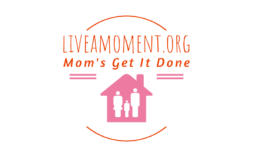Childhood trauma can have a lasting impact on emotional, mental, and physical well-being, but with the right support, healing is possible. Choosing the appropriate therapy for childhood trauma is crucial to overcoming the pain and rebuilding a positive outlook on life. For families in Edmonton seeking expert care, working with a qualified child psychologist can provide the compassionate, tailored support children need to navigate their healing journey.
Understanding Childhood Trauma and the Need for Therapy
The Long-Term Effects of Childhood Trauma
Childhood trauma, whether it’s physical, emotional, or psychological, can leave deep scars that affect a person’s development and relationships well into adulthood. Trauma experienced in early years often influences how individuals view themselves, others, and the world around them. For many, this can result in feelings of insecurity, low self-esteem, and difficulty managing emotions.
Therapy for childhood trauma helps individuals process these experiences in a safe and supportive environment. It offers the tools necessary to reframe past events, manage emotional responses, and foster resilience.
Introduction to Therapy for Childhood Trauma
When it comes to healing from childhood trauma, there is no one-size-fits-all approach. The best therapy for childhood trauma is the one that aligns with an individual’s specific needs, preferences, and emotional goals. Therapists use various techniques and modalities, each offering unique benefits in the healing process.

Understanding the different therapies for childhood trauma can empower individuals to make informed decisions about their treatment. Whether through talk therapy, body-based therapies, or a combination of approaches, finding the right therapy is key to long-term recovery and emotional well-being.
Exploring the Finest Therapies for Childhood Trauma
Cognitive Behavioral Therapy (CBT)
Cognitive Behavioral Therapy (CBT) is one of the most widely used therapies for childhood trauma. This evidence-based approach helps individuals identify and challenge negative thought patterns associated with their trauma. CBT focuses on changing unhealthy thinking and behaviors that may have developed in response to the trauma.
For individuals dealing with childhood trauma, CBT provides tools to reframe their thoughts and manage triggers more effectively. It helps individuals understand how their trauma has shaped their worldview and offers practical strategies for reducing anxiety, depression, and other symptoms associated with the trauma.
Eye Movement Desensitization and Reprocessing (EMDR)
Eye Movement Desensitization and Reprocessing (EMDR) is considered one of the best types of therapy for childhood trauma, especially for those who struggle with post-traumatic stress disorder (PTSD). EMDR uses bilateral stimulation, such as guided eye movements, to help individuals process traumatic memories.
During an EMDR session, the therapist helps the individual access their traumatic memories in a safe environment. Through bilateral stimulation, the brain is able to reprocess the memory, reducing the emotional charge it holds. Many individuals report feeling a significant reduction in their trauma-related symptoms after undergoing EMDR.
Trauma-Focused Cognitive Behavioral Therapy (TF-CBT)
Trauma-Focused Cognitive Behavioral Therapy (TF-CBT) is specifically designed for children and adolescents who have experienced trauma. This therapeutic approach combines elements of traditional CBT with trauma-sensitive techniques that help young individuals process their experiences in a supportive way.
TF-CBT focuses on helping children and their caregivers understand the trauma and its impact, offering coping mechanisms that reduce distress. By engaging both the child and their family in the therapeutic process, TF-CBT aims to create a supportive environment where the child feels safe to explore their trauma.
Somatic Experiencing (SE)
For individuals who feel their trauma deeply in their bodies, Somatic Experiencing (SE) is an effective therapy for childhood trauma. SE is a body-based approach that focuses on releasing the physical tension stored in the body due to trauma.

Many people with childhood trauma experience physical symptoms such as chronic pain, tension, or digestive issues. SE helps individuals reconnect with their bodies and release the trauma stored within, allowing them to heal not just emotionally, but physically as well. By focusing on bodily sensations, SE encourages the nervous system to complete the natural trauma response, which can lead to emotional release and healing.
Play Therapy
For younger children who may have difficulty expressing their trauma verbally, Play Therapy is a highly effective childhood trauma therapy. Play Therapy provides a safe, nonverbal way for children to process their feelings and experiences through play. Trained therapists observe and interact with the child during play sessions, using toys, games, and creative activities to help the child express emotions and work through their trauma.
Play Therapy creates a safe space for children to act out their feelings, allowing them to make sense of their trauma and begin the healing process. It’s an ideal therapeutic approach for children who may not have the vocabulary or emotional maturity to express their trauma through traditional talk therapy.
Internal Family Systems (IFS)
Internal Family Systems (IFS) is another therapy that works well for childhood trauma. This therapeutic model views the mind as composed of different parts or “subpersonalities” that represent various aspects of ourselves, such as the inner critic, the wounded child, or the protector.
Childhood trauma often creates fragmented parts of the self that hold onto painful memories or negative beliefs. In IFS, individuals learn to access these parts, understand their roles, and bring healing to the inner system. By working with these internal parts, individuals can heal their inner child, reduce the intensity of their trauma responses, and foster a sense of self-compassion.
Summing Up the Finest Therapies for Childhood Trauma Healing
In conclusion, healing from childhood trauma is a journey that requires the right therapeutic support. There are various therapies for childhood trauma, each offering unique benefits. From Cognitive Behavioral Therapy (CBT) and EMDR to Somatic Experiencing and Play Therapy, finding the best type of therapy for childhood trauma is about understanding what works best for the individual’s needs and preferences.
Therapy for childhood trauma not only helps individuals process their painful experiences but also empowers them to build healthier, more resilient lives. Whether you’re seeking treatment for yourself or a loved one, the right therapy can offer a pathway to healing, personal growth, and emotional freedom.


